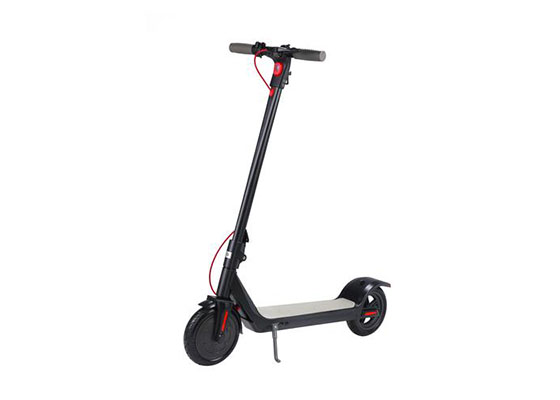In today’s world, where concerns about rising fuel prices and environmental impact are on the rise, choosing the right mode of transportation is crucial. When it comes to scooters, the debate between electric and petrol options often arises. One important factor to consider is the running cost. In this article, we will compare the running costs of electric scooters and petrol scooters to help you make an informed decision.
Cost of Fuel
Electric Scooters
Electric scooters are powered by rechargeable batteries, eliminating the need for traditional fuels. Charging an electric scooter is relatively inexpensive and convenient. You can charge it at home, at work, or at various charging stations available in many cities. On average, the cost of electricity per mile/kilometer for an electric scooter is significantly lower than the cost of petrol.
Petrol Scooters
Petrol scooters, on the other hand, require regular refueling at petrol stations. The price of petrol can vary, but it tends to be more expensive than electricity. Additionally, petrol scooters have varying fuel efficiency, meaning they consume different amounts of petrol per mile/kilometer. It’s important to consider the average petrol cost per mile/kilometer when comparing running costs.
Maintenance and Repairs
Electric Scooters
Maintenance requirements for electric scooters are generally lower compared to petrol scooters. Electric scooters have fewer moving parts, resulting in less wear and tear. Routine maintenance mainly involves checking the battery, tires, and brakes. These maintenance tasks are usually affordable and can be done by the rider or a professional.
In terms of repairs, electric scooters are generally more reliable due to their simpler design. However, if any component of the electric scooter, such as the battery or motor, needs replacement, it can be relatively costly.
Petrol Scooters
Petrol scooters require regular maintenance, including oil changes, spark plug replacements, and air filter cleaning. These routine maintenance tasks can add up over time. In terms of repairs, petrol scooters can experience issues with the engine, transmission, or other complex components, which can be costly to fix.
Government Incentives and Subsidies
Electric Scooters
One advantage of electric scooters is the availability of government incentives and subsidies. Many governments around the world offer financial incentives to promote the adoption of electric vehicles, including scooters. These incentives can include tax credits, rebates, or grants, making electric scooters more affordable in the long run.
Petrol Scooters
Unfortunately, petrol scooters do not typically receive specific incentives or subsidies from the government. This factor makes electric scooters more appealing in terms of cost savings.
Environmental Impact
Electric Scooters
Electric scooters have zero tailpipe emissions, making them an environmentally friendly option. They contribute to reduced air pollution and help combat climate change. By choosing an electric scooter, you can play a part in creating a cleaner and greener environment.
Petrol Scooters
Petrol scooters emit carbon emissions during operation, contributing to air pollution and climate change. The combustion of petrol releases greenhouse gases that have a negative impact on the environment. Opting for a petrol scooter means supporting a less eco-friendly mode of transportation.
Total Cost of Ownership
Electric Scooters
To calculate the total cost of ownership (TCO) of an electric scooter, you need to consider various factors, including the purchase price, running costs, maintenance expenses, and potential government incentives .
that offset the initial investment. While electric scooters may have a higher upfront cost compared to petrol scooters, their lower running costs and potential incentives can result in significant savings over time. By factoring in the TCO, you can make a more accurate assessment of the cost-effectiveness of an electric scooter.
Petrol Scooters
For petrol scooters, the TCO includes the purchase price, fuel expenses, routine maintenance costs, and potential repair expenses. While petrol scooters may have a lower initial cost compared to electric scooters, their higher fuel and maintenance costs can add up over the years. It’s essential to consider the TCO to understand the long-term financial implications of owning a petrol scooter.
Conclusion
When comparing the running costs of electric scooters and petrol scooters, it becomes evident that electric scooters have several advantages. They have lower fuel costs, require less maintenance, may be eligible for government incentives, and have a positive impact on the environment. While petrol scooters may have a lower upfront cost, their higher fuel and maintenance expenses can offset the initial savings.
When making a decision between an electric scooter and a petrol scooter, consider your budget, commuting needs, and environmental consciousness. If you prioritize cost savings, environmental sustainability, and minimal maintenance, an electric scooter may be the ideal choice for you. However, if upfront cost and availability of petrol stations are crucial factors, a petrol scooter may be more suitable.
Ultimately, the choice between electric and petrol scooters depends on your individual preferences and circumstances. By considering the running costs discussed in this article, you can make an informed decision that aligns with your financial goals and environmental values.
Remember to carefully evaluate the specific models and their features before making a purchase. Conduct further research, test-drive different scooters if possible, and consult with experts or experienced riders to gather more insights. With the right choice, you can enjoy an economical and eco-friendly mode of transportation for your daily commute.




